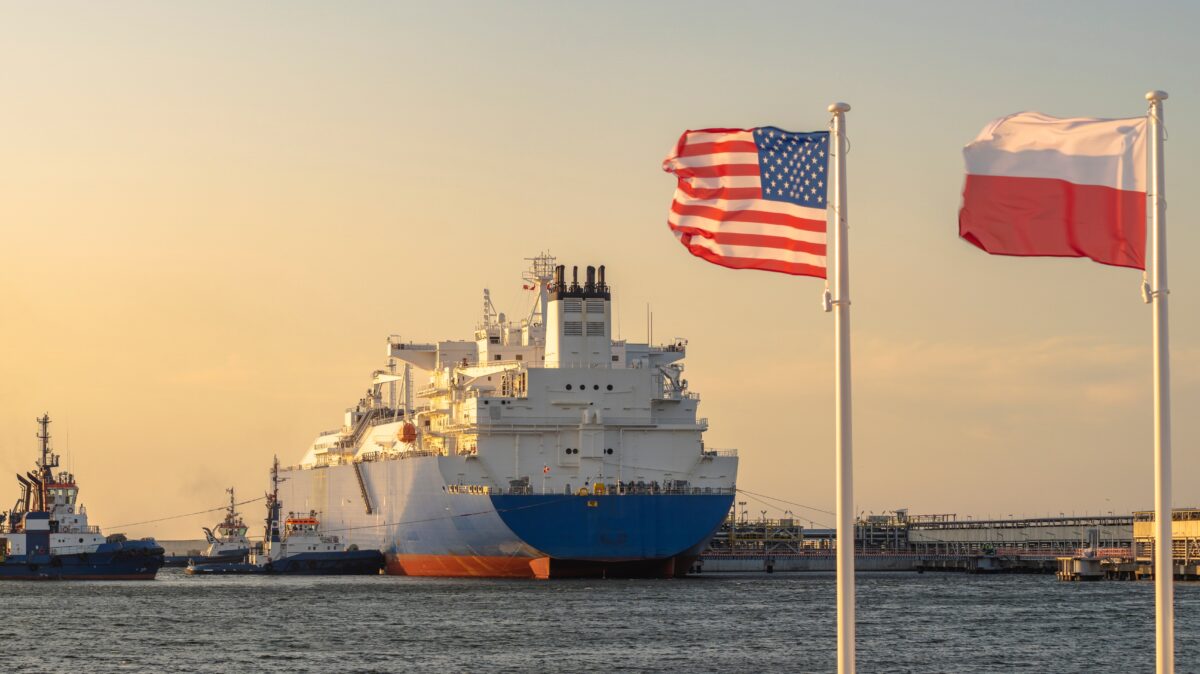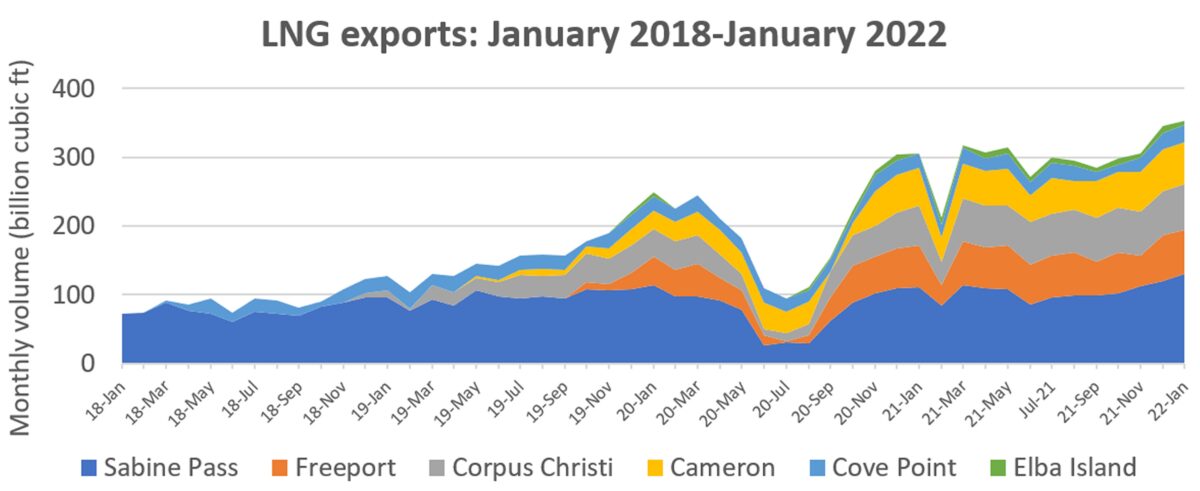Fallout from Russia’s invasion of Ukraine is being felt across all shipping markets, but none more so than liquefied natural gas (LNG) shipping. Consequences to this shipping segment have been immediate, sweeping and possibly permanent.
Traditionally, about 30% of U.S. LNG exports has gone to Europe. The destination mix has dramatically changed. Over the past two months, around 70% of U.S. LNG is going to Europe, according to Evercore ISI analyst Sean Morgan.
Ship-position data from MarineTraffic shows an armada of ships full of U.S. LNG now en route to Europe. Only a small minority of U.S. cargoes are destined for Asia.

“The recently announced EU energy supply reconfiguration could be the largest change in European energy consumption since the end of the Second World War,” said Morgan in a presentation to investors last week.
The European plan — which assumes continued access to Russian supply during the transition — calls for 70% of natural gas imports from Russia to be replaced and for the EU to increase its LNG imports by 4.8 billion cubic feet (Bcf) per day over the next 12 months. Morgan pointed out that this is the equivalent of over a third of America’s total export capacity.
More destination flexibility
U.S. LNG exports have much more destination flexibility than exports from Qatar and Australia, making America the best source of immediate replacement supply for Europe. Even so, American volumes won’t suffice if Europe loses access to Russian pipeline supply. “There isn’t enough seaborne gas available to replace Russian volumes,” wrote Morgan.
U.S. LNG exports are hitting new records each month, with terminals delivering volumes at or beyond their nameplate capacities. Exports reached 353.5 Bcf in January. RBN Energy predicted that exports will post another record this month, given a new export train at Cheniere’s Sabine Pass facility and the startup of the new Calcasieu Pass export plant.

Last week, the Biden administration gave Cheniere (NYSE: LNG) authorization to send additional volumes from its Sabine Pass and Corpus Christi facilities to countries that do not have free trade agreements with the U.S., including all of Europe. The U.S. Energy Information Administration now predicts that U.S. LNG imports will increase by 16% in 2022 versus 2021.
Higher demand from Europe could spur additional final investment decisions on more U.S. liquefaction capacity. Morgan called the Russian invasion of Ukraine a “massive opportunity for U.S. LNG export expansion plans.”
LNG shipping rates
Despite the armada of ships full of U.S. LNG headed to Europe, spot rates for LNG carriers are not unusually high.
According to Clarksons Platou Securities, spot rates for tri-fuel, diesel engine (TFD) LNG carriers were at $42,500 per day on Monday. That’s well above the mid-February low of $25,000 per day, but in line with the 2017-21 average for this time of year.
LNG shipping is primarily a long-term contract market, not a spot business. “The spot market remains thin,” said Clarksons, which noted that “the term charter market continues to be active,” with modern TFDE carriers signing 12-month deals for $115,000 per day.
If the Russian invasion of Ukraine pushes more U.S. LNG to Europe instead of Asia on a sustained basis, that’s not positive for spot rates. Given the much shorter sailing distance, the U.S.-Europe trade requires less ship capacity than the U.S.-Asia trade.
Spot rates reach exceptionally high peaks at times when Asian LNG prices are substantially higher than European LNG prices. That pricing gap draws more U.S. LNG cargoes to Asia instead of Europe, and compels traders to re-export LNG from Europe to Asia. The more Atlantic-to-Pacific cross-basin trade, the higher the voyage distances, the shipping demand and the spot rates. In contrast, the conflict with Russia has kept European LNG prices high, curbing average voyage distance.
Click for more articles by Greg Miller
Related articles:
- Why Russia-Ukraine war has not ignited crude tanker rates (yet)
- How Russian invasion of Ukraine could impact ocean shipping
- LNG shipping’s wild ride: Record, plunge, new record, new plunge
- First containers, then dry bulk, now LNG shipping rates are spiking
- New world record set for shipping rates: $350,000 per day
- LNG shipping rates just hit $125,000 per day











